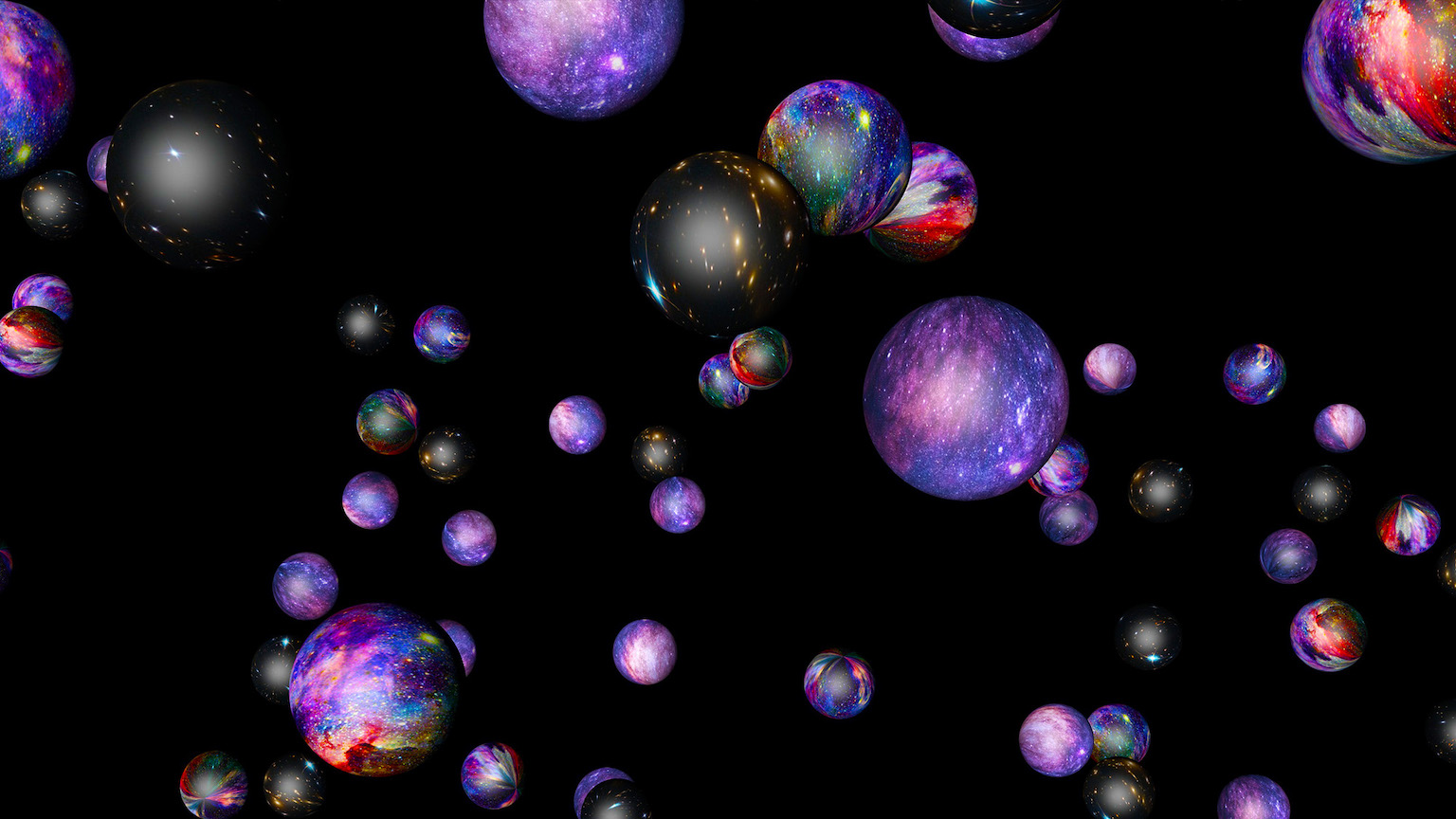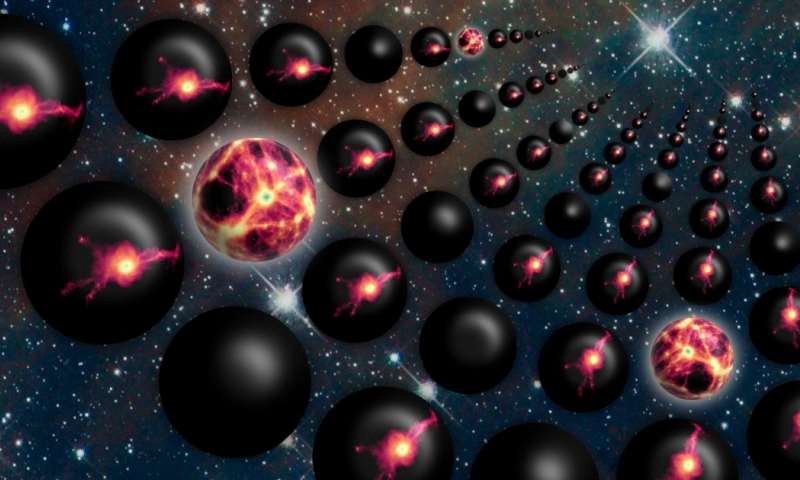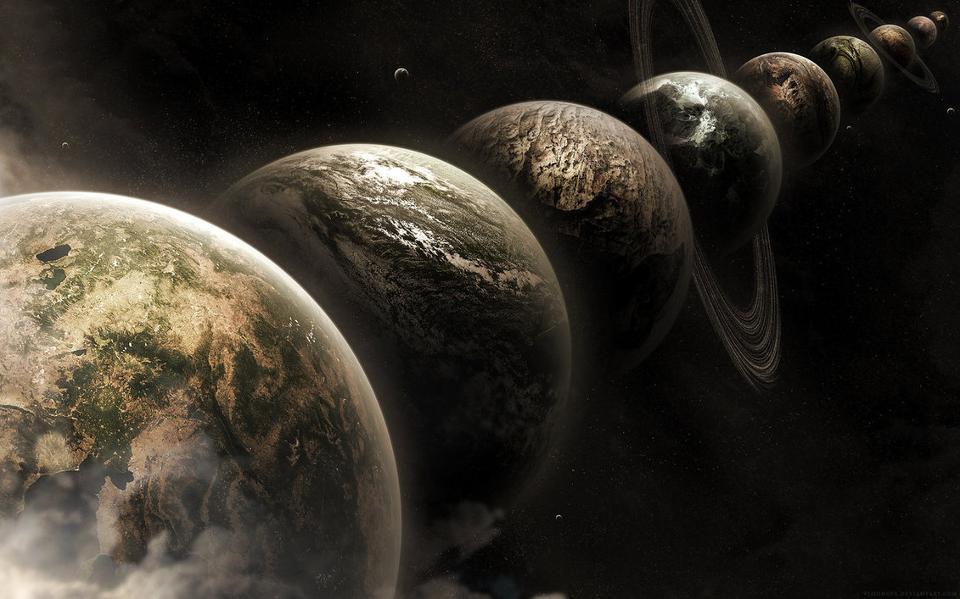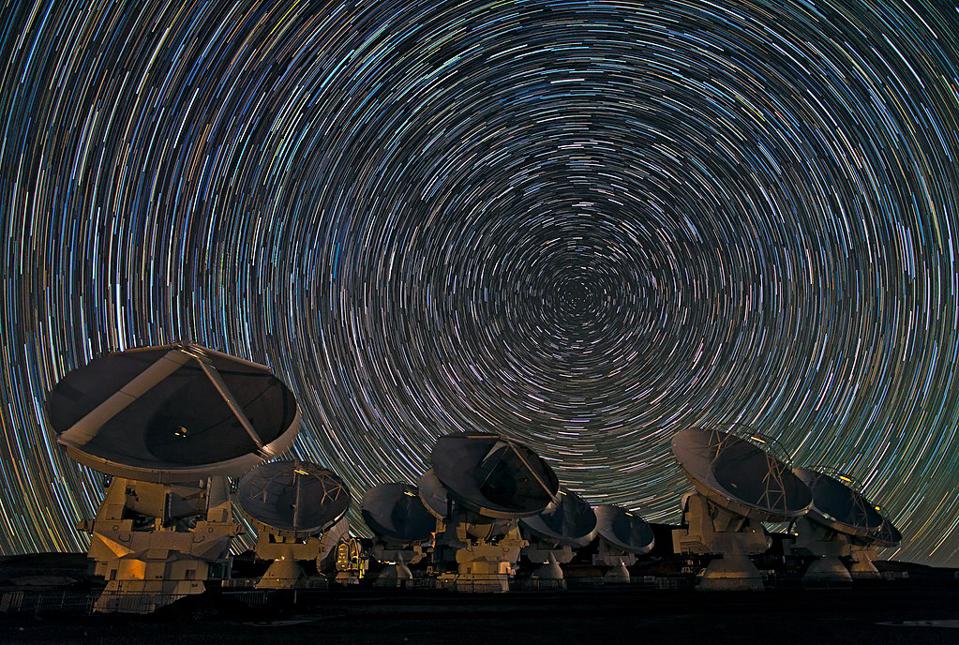Is the Multiverse real? Two astrophysicists debate

- Astrophysicist (and Starts with a Bang columnist) Ethan Siegel argues that the Multiverse exists and is simply a matter of logical deduction based on solid theory.
- Astrophysicist (and 13.8 columnist) Adam Frank disagrees, arguing that accepting the existence of a Multiverse comes with a strange cost — namely, believing that there are an infinite number of Universes that we can never detect.
- Who do you think has the stronger argument?
Here at Big Think, we are incredibly lucky to have some of the greatest minds writing about the biggest questions in the Universe. In this case, the question is even bigger than the Universe.
We invited two astrophysicists Dr. Ethan Siegel (Starts with a Bang columnist) and Dr. Adam Frank (13.8 columnist) to engage in a debate over one of the hottest topics in astrophysics: Is the Multiverse real?
Ethan’s argument: Yes, the multiverse is real
Cosmic inflation and quantum field theory both describe the Universe. Cosmic inflation, first put forth in 1980, tells us what the Universe was like prior to the hot Big Bang in order to set it up with the conditions that we observe. Put simply, it states that before the Universe was filled with matter and radiation, it was filled with some sort of energy that was inherent to the fabric of space itself, which caused the Universe to expand in a relentless, exponential fashion. Then, at some point, inflation ended, transitioning that “energy inherent to space” into particles and giving rise to the hot Big Bang.
Because the Universe is inherently quantum in nature, that means we should expect that whatever inflation is, it has a nature that is consistent with quantum field theory — our best and most powerful description of the Universe of particles. All the things that come along with quantum physics, like Heisenberg uncertainty and the existence of quantum fluctuations, must apply to inflation as well.
So, what happens when you put inflation and quantum field theory together? You get a series of predictions, many of which have been borne out by observations. Inflation is now widely regarded as the origin of our Universe, and those observations narrow down which classes of inflationary models remain viable. Accepting cosmic inflation and quantum field theory is the scientific consensus right now, meaning it can be considered our “starting point” upon which we build.
If cosmic inflation and quantum field theory are both correct, then the Multiverse arises as an inevitable consequence of the two, combined. The easiest way to picture inflation is that it’s a ball at the top of a very flat plateau. The ball can roll slowly in any direction, but so long as it remains atop the plateau, inflation continues. It is only when the ball rolls off the plateau and into the valley below that inflation comes to an end, transitioning into a Universe dominated by particles: matter and radiation, which signifies the start of the hot Big Bang.
So where does the Multiverse come from?
One of the properties of quantum physics is that the position of a particle at any given time isn’t deterministic but follows a probability distribution. Moreover, the wavefunction that describes that probability distribution spreads out over time. You can visualize this, instead of as a ball, as the ripples generated by a ball dropped into a pond.
Now, here’s where it gets interesting: We have two things competing against one another. On the one hand, we have the speed of the rolling ball, and on the other hand, we have the speed of the ripples that propagate outward. If the ball rolls faster than the ripples propagate, inflation can end everywhere at once, and there will only be one Universe — bigger than the observable Universe that we can see, but still finite in size and all connected.
But if the ripples propagate faster than the ball rolls, then you will have regions where the ripples “fall off” the plateau, and in those regions, you get a hot Big Bang. But, you will also have regions where the ripples take you closer to the center of the plateau, and in those regions, inflation continues. What you wind up with, in this latter scenario, are regions where inflation ends and you get a hot Big Bang, but separated by regions where inflation continues for longer. As time goes on, you will get more and more regions where inflation ends and the hot Big Bang ensues, but also evermore regions where inflation continues.
Those regions of space where inflation end and the hot Big Bang begins are each their own, independent Universe, and together, they make up a Multiverse. We may not be able to measure these other Universes, at least not just yet, but there’s every reason to expect that if inflation and quantum field theory are both correct, then the Multiverse inevitably exists.
Adam’s rebuttal: No, the multiverse is not real
Ethan does a great job of summarizing both inflation and its connection to the Multiverse. So, a good place to start is to note that in my original piece, I was criticizing the idea of the Multiverse but not, necessarily, inflationary cosmology. There are reasons why positing a brief period of expansion-on-steroids (that is, inflation) can be useful. The problem comes if the only way you can make it work is adding an infinite number of observable Universes.
It is important, from my viewpoint, to understand what is happening with inflation theory — because it is not really a theory the way, say, electromagnetism or quantum mechanics is. It is not what I would call a theory with a capitol “T,” featuring endless points of experimental verification such that its true form has been nailed down and locked tight.
Instead, it is a class of theories with lots of wiggle room for individual instantiations. That wiggle room has led to many discussions about the ability of the theory to ever be falsifiable because, no matter what new data is gathered, there will always be a version of it that can be designed to slip through the new constraint. (I note there are also discussions about the continued need for “fine tuning” with inflation theory.)
Inflation does have a few places where it is consistent with observations like the spectrum of perturbations that get propagated forward in time to become large-scale cosmic structure. That is indeed very good. But it is a far cry from the kind of validation we have of, say, the Standard Model of Particle Physics, which has been verified six ways to Sunday.
This is an important point because inflation takes physics we understand at way, way lower energy scales and extrapolates them into very different kinds of conditions. There are many orders of magnitude between the quantum field theory we understand and the inflationary domains of spacetime. This is one reason why there are so many flavors of inflation. We don’t even know what physical field drives inflation. Its particle is just called the “inflaton,” and there is a lot of latitude available for theorists in making up its properties. Now this, by itself, is not a problem. Speculation and extrapolation are part of what physicists do.
But…
If, in the process of extrapolating to wildly extreme regimes, you end up in dangerous (from the point of view of the epistemological underpinnings of science) territory, then I think you need to step back and ask about what might have gone wrong.
This is exactly what happens with “eternal inflation” and the Multiverse. A theory we understand in one regime (much lower energy particle accelerators) gets stretched into a very different one (10-36 of a second after the Big Bang). That extrapolation solves some problems (but not others), but it all comes at a strange cost. That cost is what I call “ontological exuberance.”
It is possible that the only way the inflation extrapolation works is to accept an infinite number of Universes that you may never ever be able to observe. But that is not good. And it is not like anything else that’s happened in the history of physics. Sure, we cannot observe what is inside a black hole; and yes, we have dark matter that we cannot see; and yes, there are the parts of our Universe beyond the light horizon. But in the case of dark matter (if it exists), then we can at least learn a lot about it in bulk based on the detailed influences it exerts on the luminous matter we can see. And as for the insides of event horizons, I am not forced to accept infinite numbers of Universes as the price for accepting General Relativity. Same goes for what lies beyond the observable Universe.
To summarize, I would argue that inflation has some attractive features, but it simply does not stand as the kind of scientific edifice (in terms of having many, many points of contact with observation) that should force us to accept the Multiverse. If that is really the only choice, then it’s the assumptions, from soup to nuts, that went into the whole extrapolation enterprise that should be re-examined. Humility in science is a good thing.
Ethan’s response: Many predictions have been verified
Adam’s response contains some interesting food-for-thought, but there is a dubious logical gambit in there at the core of his argument, which can be paraphrased this way: We don’t know everything, therefore how can we trust anything? In any scientific endeavor, you absolutely must be careful about what assumptions you are making that go beyond the limit of what you can observe and/or verify, but you must also not ignore the very generic predictions that show up independently of the assumptions that you make.
What he asserts about inflation is true in the sense that we do not know absolutely everything about it, including what the exact properties of the specific model of inflation are that describes our Universe. However, I would dispute his assertion that you can cook up any model you like to give you any properties you like, as many predictions are model-independent. In other words, no matter what model of inflation you choose to work with, the same behavior always emerges. These are the things we can trust, most confidently, about what inflation predicts.
So, what are the model-independent predictions? Here are some of them:
- a Universe seeded with fluctuations that would have been almost the same on large cosmic scales as small ones, but that differed slightly, at the few percent level;
- including on scales greater than the speed of light could have reached since the start of the hot Big Bang (i.e., superhorizon fluctuations);
- a Universe whose initial imperfections were 100% adiabatic (with constant entropy) and 0% isocurvature (with constant curvature);
- a Universe whose initial temperature at the start of the hot Big Bang had to be multiple orders of magnitude below the Planck temperature;
- that was indistinguishable from perfectly flat until you were sensitive to departures that were merely a few-parts-in-a-million;
- and that came along with a gravitational wave background of a specific spectrum, but with unknown magnitude.
Over the past ~40 years, we have put these predictions to the test and verified the first four of them. Currently, we are unable to measure the Universe to the necessary sensitivity to detect the final two.
But another prediction — and yes, it is a prediction — that inevitably comes out of inflation is this: if you concoct a model of inflation that agrees with observations, specifically by allowing “enough” inflation to occur to give the Universe the properties we observe it to have, then inflation always continues in more regions of space than it ends. Because the inflating portions of space grow exponentially, and the non-inflating portions grow at a much slower rate (as a power law), there is always more inflating space than regions where inflation ends, and that inflating space separates and drives apart those other regions.
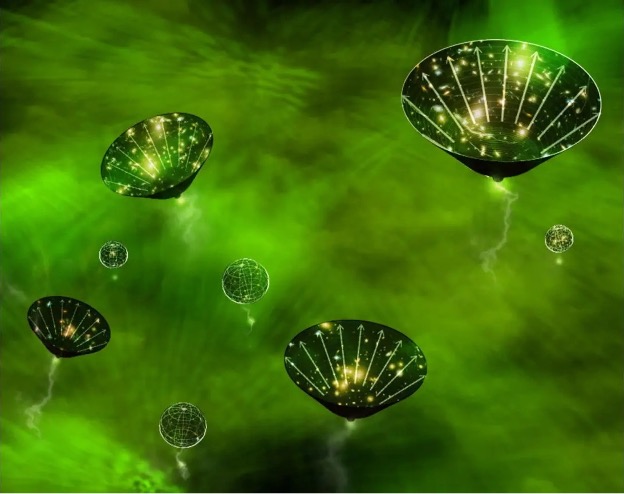
Credit: Kavli IMPU
Once inflation begins, anywhere in the Universe, this scenario (illustrated above) is inescapable. That is why there is a Multiverse, and why the Multiverse is a generic prediction of inflation. Quantum gravity will not save you, since this occurs at energy scales much lower than those where quantum gravity is important. Moreover, Adam’s appeal to the physics of very high energy scales will not save his argument, since these properties of inflation have been shown to be energy-scale independent.
In other words, yes, inflation gives you some wiggle room in many ways, but you cannot wiggle out of the Multiverse. The only way out, as Adam says, is to postulate a Rumsfeldian “unknown unknown” to save you. And while that is always possible in any endeavor, I think it is far preferable to draw your best conclusions based on what is known to the limits of our best knowledge at the time. To retort with a quote from the late “Macho Man” Randy Savage, “You may not like it, but accept it.”

